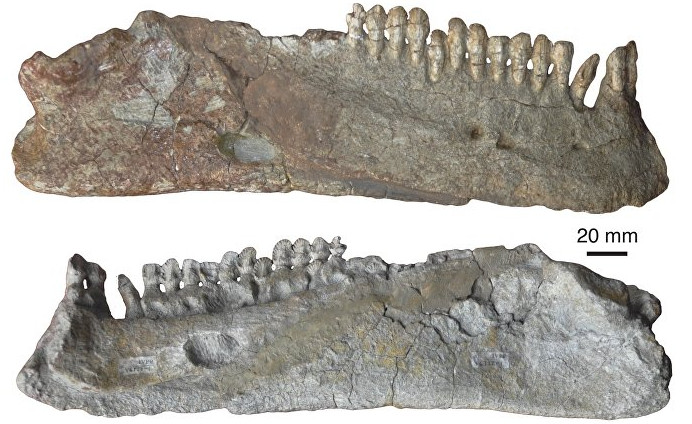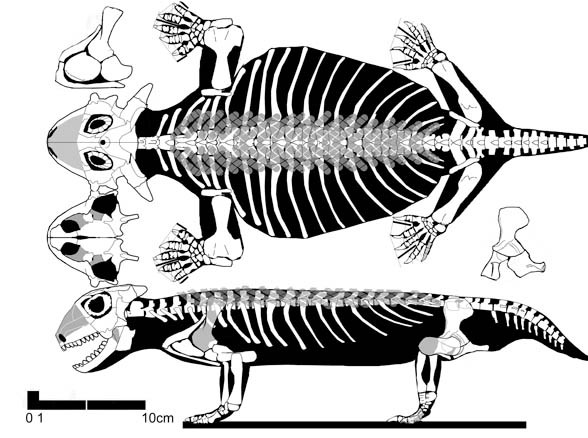The world's worst-known creature before dinosaurs
The herbivore possesses a massive body and bizarre shape known by the scientific community as the "worst fossil reptile" ever.
According to Tech Times, the pareiasaur species used to roam in Russia, Germany, Scotland, China, South Africa and South America. However, previous research does not indicate whether pareiasaur groups are different in each region.
In a new study published in the Journal of Zoology on February 19, Professor Mike Benton, a paleontologist from the University of Bristol, UK, discovered that the pareiasaur fossil found in China has some similarities. with specimens in South Africa and Russia. Research results show that heavy herbivores have moved around the globe regardless of slow movement.

A piece of fossil bone from paresiasaur.(Photo: Michael J. Benton / Bristol University).
Pareiasaur is 2-3 meters long. They have a barrel-like body and stubby limbs. Despite their massive appearance, their heads and teeth are very small. Tumors formed from bone cover the entire body and face of the animal.
Researchers found 6 pareiasaur species in China. Most fossils are concentrated in Permian rocks on the banks of the Yellow River. Benton analyzed pareiasaur specimens from many museums in Beijing. He also went to places where specimens were discovered.
"My evolutionary study of the pareiasaur process shows that species in China are closely related to relatives from Russia and South Africa. Despite their large bodies and slow moving habits, they can crawl around. Benton shared. His research also shows three pareiasaur species in China that have differences in tooth shape and body size.

The pareiasaur species in China lived in the end of the Permian.
The pareiasaur species in China lived in the end of the Permian, the period of the great extinction, 252 million years ago. During this time, intense volcanic eruptions in Russia caused global warming and created acid rain, causing 90% of animals to perish.
"We can use this information as a platform to learn how pareiasaur migrates and occupies different parts of the world," said Linda Tsuji, manager at the Royal Ontario, Canada Museum.
- It turns out that we've been cheated by the worst fish on the planet
- 10 weird, hard to imagine dinosaurs
- Discovered the body of the creature of today resembling dinosaurs 65 million years ago
- Unfold the dinosaur secret
- Arctic dinosaurs are only 20 years old
- Discover new marine reptile species of the same period of dinosaurs
- Dinosaurs
- 10 misconceptions about dinosaurs
- What if dinosaurs live with humans?
- 70 million years old dinosaurs
- How does the dinosaur learn to fly?
- Erotic dance of carnivorous dinosaurs
 Discovered an ancient centipede fossil 99 million years old
Discovered an ancient centipede fossil 99 million years old Discovered bat-like dinosaurs in China
Discovered bat-like dinosaurs in China Discovered a 200-year-old bronze cannon of the coast
Discovered a 200-year-old bronze cannon of the coast Discover 305 million-year-old spider fossils
Discover 305 million-year-old spider fossils